At the 74th Academy Awards on March 24, 2002, Barbra Streisand dazzled in an opulent, deep-burgundy, velvet-fringed Donna Karan gown as she took the stage to present Robert Redford with an honorary Oscar, recognizing his lifelong contributions to the film industry.
Embed from Getty ImagesIn her tribute, Streisand praised Redford as ‘always interesting, always interested’, reflecting on their collaboration with warmth and admiration. She described him as ‘the intellectual, the artist, the cowboy,’ celebrating his ability to tell stories that reveal both the strength and the vulnerability of the American spirit. Streisand highlighted his subtlety as an actor and director, his progressive vision, and his 1981 founding of the Sundance Institute, which has nurtured generations of independent filmmakers. “His impact on the film industry is indelible. It’s impossible to reduce it all to four minutes, but here are some of the reasons that Robert Redford remains a beloved and invaluable force in American film”, she concluded, honoring his lifelong contributions. 1
Streisand’s burgundy off-the-shoulder gown was crafted from burnout velvet, a fabric Donna Karan had been incorporating into her designs since the 1990s. For this look, Karan fashioned a dramatic triangular overlay from the fabric, evoking the elegant drape of a 1920s piano shawl, edged in macramé fringe. The gown featured Streisand’s quintessential left-side slit and was adorned with countless crystals, adding a gorgeous sparkle, both on camera and from the stage.
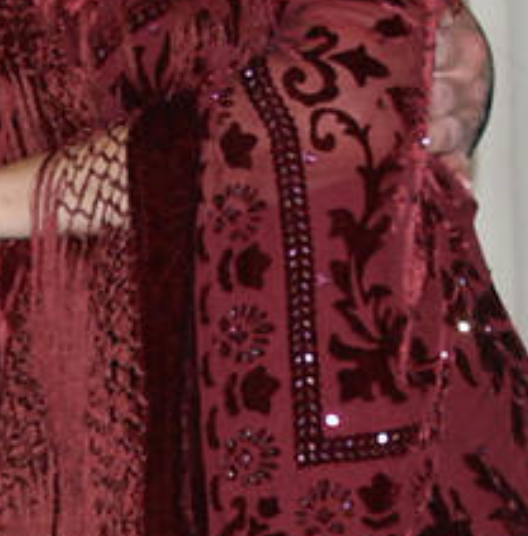
Streisand paired this look with burgundy ankle-strap heels and a stunning ruby and diamond necklace, likely dating back to the late 19th Century. Gloria Estefan wore the same piece to the 72nd Academy Awards in 2000.
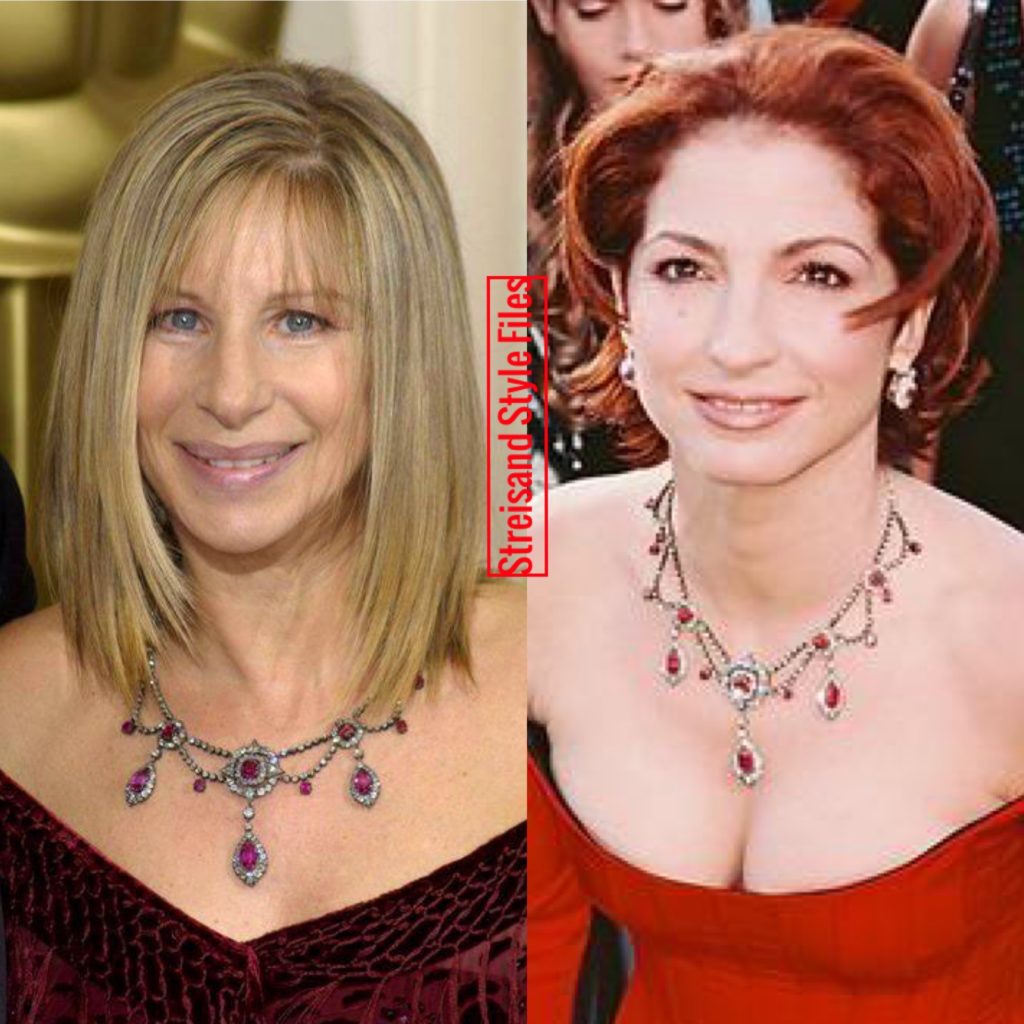
Also known as “devoré”, burnout fabric is thought to date back to 17th-century France, where it was invented as a cheaper replacement for lace. Textile artist Dionne Swift explains that in its early history, caustic pastes were block-printed onto fabric and then washed away, creating quick, spontaneous patterns as a kind of ‘poor man’s lace.’ By the 1920s, the fabric had undergone a dramatic transformation. No longer a cheap, utilitarian material, it became a luxurious and highly sought-after textile, embraced by mainstream fashion and commanding a premium price. 2
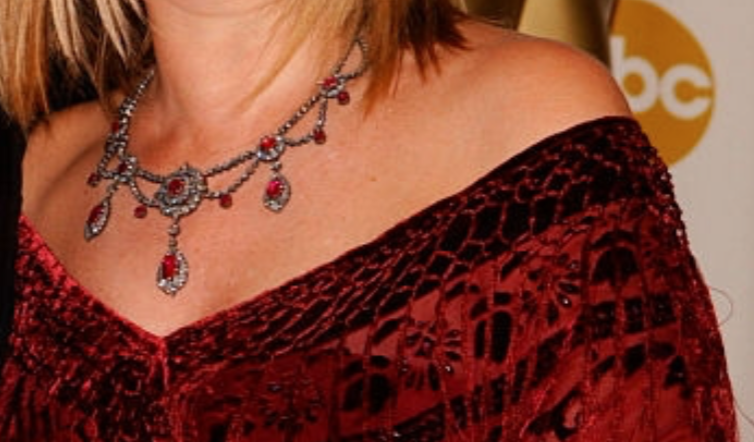
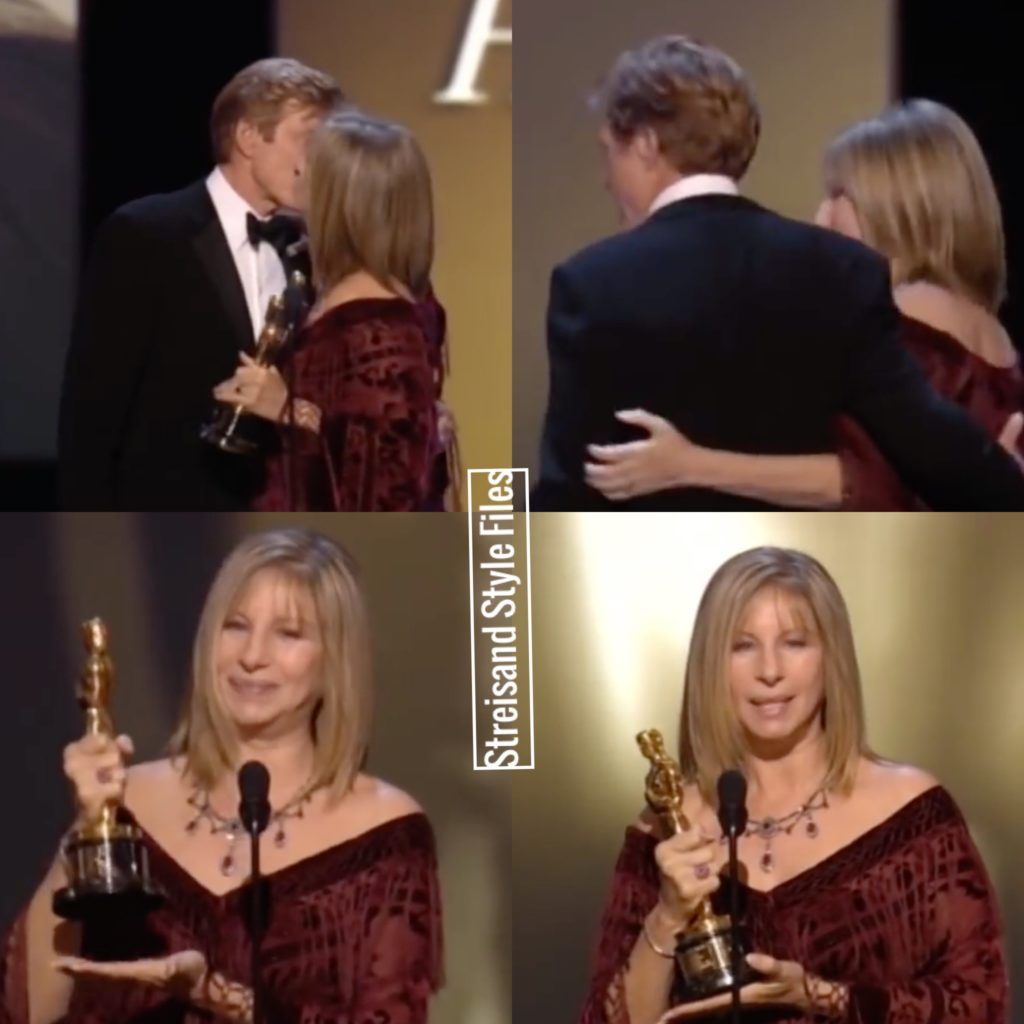
Streisand would later revisit a similar fringed velvet aesthetic for the cover of her 2018 album, Walls.
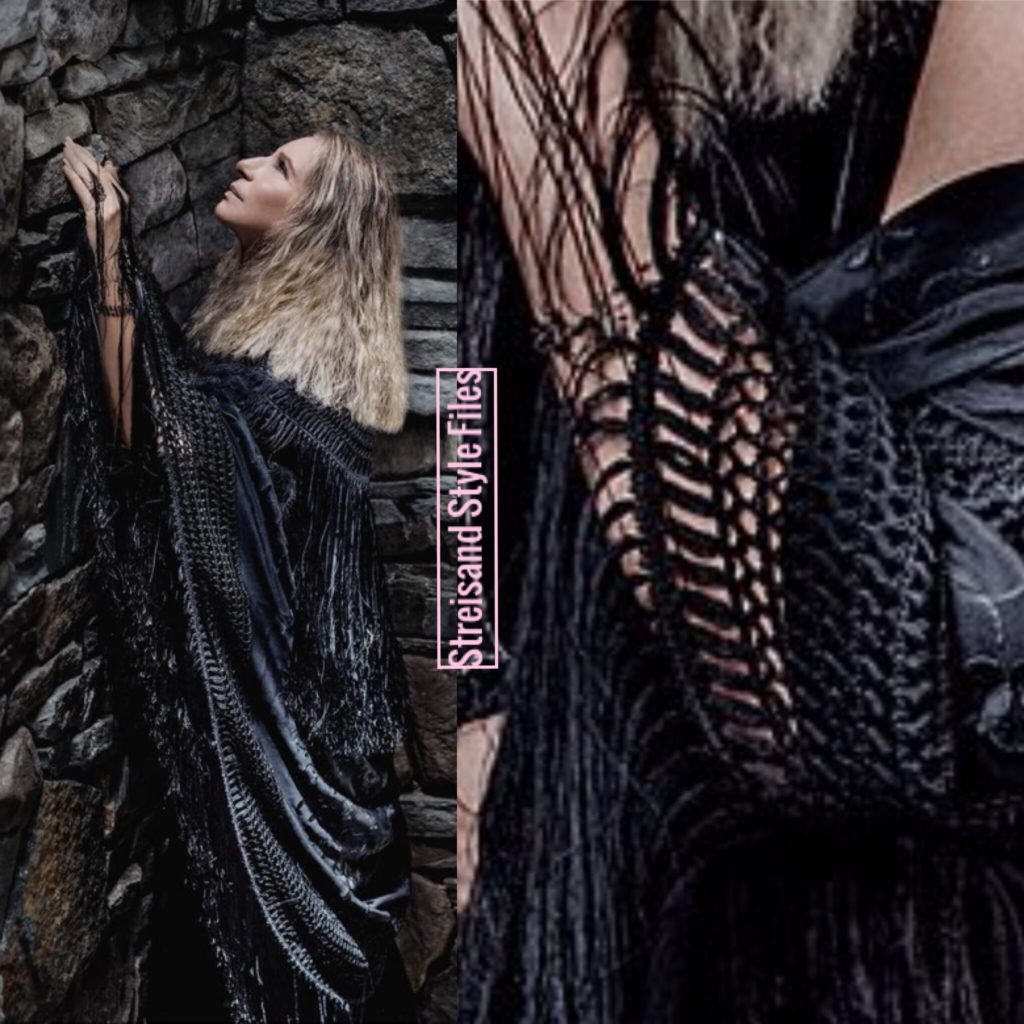
Sources: